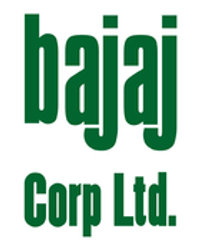
Bajaj Consumer Care Ltd
NSE:BAJAJCON


| US |

|
Johnson & Johnson
NYSE:JNJ
|
Pharmaceuticals
|
| US |

|
Berkshire Hathaway Inc
NYSE:BRK.A
|
Financial Services
|
| US |

|
Bank of America Corp
NYSE:BAC
|
Banking
|
| US |

|
Mastercard Inc
NYSE:MA
|
Technology
|
| US |

|
UnitedHealth Group Inc
NYSE:UNH
|
Health Care
|
| US |

|
Exxon Mobil Corp
NYSE:XOM
|
Energy
|
| US |

|
Pfizer Inc
NYSE:PFE
|
Pharmaceuticals
|
| US |

|
Palantir Technologies Inc
NYSE:PLTR
|
Technology
|
| US |

|
Nike Inc
NYSE:NKE
|
Textiles, Apparel & Luxury Goods
|
| US |

|
Visa Inc
NYSE:V
|
Technology
|
| CN |

|
Alibaba Group Holding Ltd
NYSE:BABA
|
Retail
|
| US |

|
3M Co
NYSE:MMM
|
Industrial Conglomerates
|
| US |

|
JPMorgan Chase & Co
NYSE:JPM
|
Banking
|
| US |

|
Coca-Cola Co
NYSE:KO
|
Beverages
|
| US |

|
Walmart Inc
NYSE:WMT
|
Retail
|
| US |

|
Verizon Communications Inc
NYSE:VZ
|
Telecommunication
|
Utilize notes to systematically review your investment decisions. By reflecting on past outcomes, you can discern effective strategies and identify those that underperformed. This continuous feedback loop enables you to adapt and refine your approach, optimizing for future success.
Each note serves as a learning point, offering insights into your decision-making processes. Over time, you'll accumulate a personalized database of knowledge, enhancing your ability to make informed decisions quickly and effectively.
With a comprehensive record of your investment history at your fingertips, you can compare current opportunities against past experiences. This not only bolsters your confidence but also ensures that each decision is grounded in a well-documented rationale.
Do you really want to delete this note?
This action cannot be undone.

| 52 Week Range |
201.36
281.15
|
| Price Target |
|
We'll email you a reminder when the closing price reaches INR.
Choose the stock you wish to monitor with a price alert.

|
Johnson & Johnson
NYSE:JNJ
|
US |

|
Berkshire Hathaway Inc
NYSE:BRK.A
|
US |

|
Bank of America Corp
NYSE:BAC
|
US |

|
Mastercard Inc
NYSE:MA
|
US |

|
UnitedHealth Group Inc
NYSE:UNH
|
US |

|
Exxon Mobil Corp
NYSE:XOM
|
US |

|
Pfizer Inc
NYSE:PFE
|
US |

|
Palantir Technologies Inc
NYSE:PLTR
|
US |

|
Nike Inc
NYSE:NKE
|
US |

|
Visa Inc
NYSE:V
|
US |

|
Alibaba Group Holding Ltd
NYSE:BABA
|
CN |

|
3M Co
NYSE:MMM
|
US |

|
JPMorgan Chase & Co
NYSE:JPM
|
US |

|
Coca-Cola Co
NYSE:KO
|
US |

|
Walmart Inc
NYSE:WMT
|
US |

|
Verizon Communications Inc
NYSE:VZ
|
US |
This alert will be permanently deleted.
 Bajaj Consumer Care Ltd
Bajaj Consumer Care Ltd
Bajaj Consumer Care Ltd
Investor Relations
Bajaj Consumer Care Ltd. engages in the manufacture and marketing of hair oil and hair care. The company is headquartered in Mumbai, Maharashtra and currently employs 480 full-time employees. The company went IPO on 2010-08-18. The firm is engaged in manufacturing of hair oils and personal care products. The firm operates through Cosmetics, Toiletries and Other Personal Care products segment. Its products include Bajaj Almond Drop Hair Oil, Bajaj Amla Aloe Vera Hair Oil, Bajaj 100% Pure Castor Oil, Bajaj 100% Pure Coconut Oil, Bajaj 100% Pure Olive Oil, Bajaj Brahmi Amla Hair Oil, Bajaj 100% Pure Jojoba Oil, Bajaj Cool Almond Drops Hair Oil, Bajaj Jasmine Hair Oil, Bajaj Sarson Amla Hair Oil and Bajaj Zero Grey Hair Oil. The firm also owns the Nomarks brand in India, such as Bajaj Nomarks Antimarks Soap, Bajaj Nomarks Ayurvedic Antimarks Cream, Bajaj Nomarks Ayurvedic Antimarks Exfoliating Face Scrub, Bajaj Nomarks Ayurvedic Antimarks Face Wash, Bajaj Multi Purpose Sanitizer and Bajaj Nomarks Hand Sanitizer. The firm has approximately eight production facilities across India.

Bajaj Consumer Care Ltd. engages in the manufacture and marketing of hair oil and hair care. The company is headquartered in Mumbai, Maharashtra and currently employs 480 full-time employees. The company went IPO on 2010-08-18. The firm is engaged in manufacturing of hair oils and personal care products. The firm operates through Cosmetics, Toiletries and Other Personal Care products segment. Its products include Bajaj Almond Drop Hair Oil, Bajaj Amla Aloe Vera Hair Oil, Bajaj 100% Pure Castor Oil, Bajaj 100% Pure Coconut Oil, Bajaj 100% Pure Olive Oil, Bajaj Brahmi Amla Hair Oil, Bajaj 100% Pure Jojoba Oil, Bajaj Cool Almond Drops Hair Oil, Bajaj Jasmine Hair Oil, Bajaj Sarson Amla Hair Oil and Bajaj Zero Grey Hair Oil. The firm also owns the Nomarks brand in India, such as Bajaj Nomarks Antimarks Soap, Bajaj Nomarks Ayurvedic Antimarks Cream, Bajaj Nomarks Ayurvedic Antimarks Exfoliating Face Scrub, Bajaj Nomarks Ayurvedic Antimarks Face Wash, Bajaj Multi Purpose Sanitizer and Bajaj Nomarks Hand Sanitizer. The firm has approximately eight production facilities across India.





























 You don't have any saved screeners yet
You don't have any saved screeners yet
